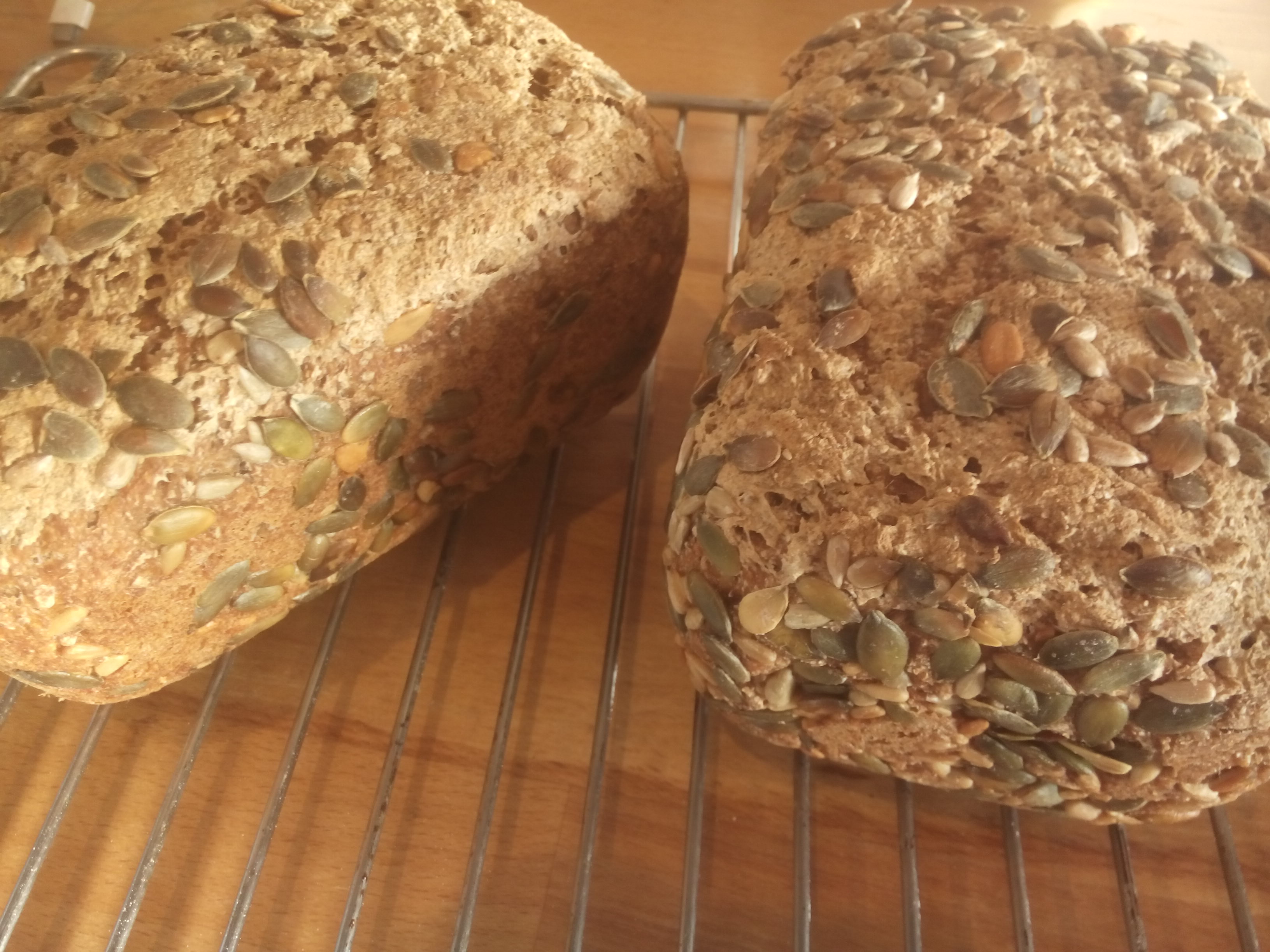This is a very Christmassy pudding that I came up with for our Boxing Day dinner. It’s combining the fruit and cream components of a classic British pudding with the traditional flavour of a German Christmas market – Gebrannte Mandeln (candied almonds). Best of both worlds, even if I say so myself.
- 30g unsalted butter
- 3 tbsp light brown sugar
- About 50ml water
- A pinch of ground cinnamon
- A good handful of almonds, roughly chopped
- 2-3 ripe but firm pears
- 125g mascarpone
- A bit of milk
Start by making the candied almonds. Heat the butter, sugar and a bit of water in a small frying pan, stirring to dissolve the sugar. Keep on heating and stirring until the water is mostly evaporated and the sugar starts to visibly get browner. Stir in the almonds and the cinnamon. Take off the heat after about a minute, and keep stirring until the sugar starts to harden. You want it to be in rather small pieces rather than large lumps of caramel. Once they’re set, they become nigh impossible to break. Set aside.
Next cut the pears into slices about 5mm thick, and cut out the seed area and the flower. Get a griddle to smoking hot, lightly oil it and sear the pear slices on both sides (possibly in batches). Set aside to cool.
To serve, stir the mascarpone with a bit of milk so it becomes softer. Then stir in half of the candied almonds. Spread the pear slices on 4 plates, put a good dollop of the mascarpone mix in the middle of each and sprinkle over the rest of the almonds.












